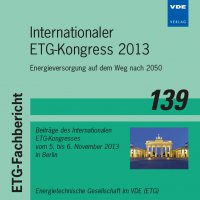A High Resolution Energy Demand Model for Commercial Buildings
Konferenz: Internationaler ETG-Kongress 2013 – Energieversorgung auf dem Weg nach 2050 - Symposium 1: Security in Critical Infrastructures Today
05.11.2013 - 06.11.2013 in Berlin, Deutschland
Tagungsband: Internationaler ETG-Kongress 2013 – Energieversorgung auf dem Weg nach 2050
Seiten: 6Sprache: EnglischTyp: PDF
Persönliche VDE-Mitglieder erhalten auf diesen Artikel 10% Rabatt
Autoren:
Subbiah, Rajesh; Lum, Kristian; Marathe, Achla; Marathe, Madhav (Network Dynamics and Simulation Science Laboratory, Viginia Tech, Virginia Bioinformatics Institute, Virginia Tech, Blacksburg, VA 24060, USA)
Inhalt:
Energy consumption by commercial buildings is a major component of the total energy consumption. In the United States commercial buildings account for about 20 percent of the overall energy consumption, and this figure is expected to increase. In this paper, we model the energy consumption of commercial buildings. By taking into account a variety of factors that affect a building’s energy consumption such as physical, structural, economic, and behavioral (i.e. occupancy), a novel activity based modeling framework is proposed which generates hourly energy demand profiles for an average weekday. Our model is calibrated to data from the EIA’s Commercial Buildings Energy Consumption Survey, fitting baseline energy consumption as a function of various physical attributes of buildings and their occupancy. This allows us to impute energy consumption values for all buildings in our study area. We use a synthetic population representing Washington D.C. to derive occupancy profiles for different commercial buildings based upon the synthetic individuals’ activities and their associated locations. These activity-derived dynamic occupancies are combined with our model to produce hourly energy demands. The model can be applied to the answer various energy policy questions, what-if scenarios in urban-area planning, and demand-side energy management.


